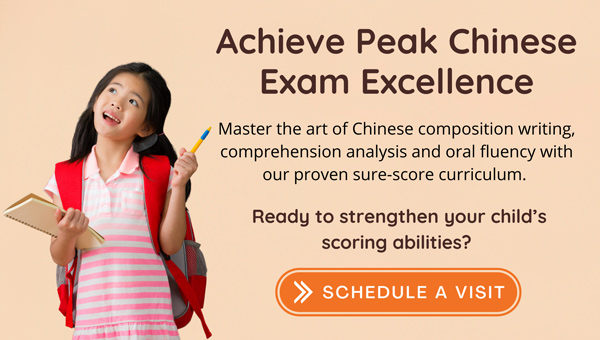Understanding the MOE Chinese Curriculum in Singapore
The Ministry of Education (MOE) in Singapore has developed a comprehensive Chinese language curriculum aimed at promoting bilingualism and ensuring students attain proficiency in both English and Chinese. Understanding the structure, objectives, and components of the MOE Chinese curriculum can help parents and educators support students effectively. This article provides an overview of the curriculum and offers insights into its key elements.
Objectives of the MOE Chinese Curriculum
- Proficiency in Chinese
- Communication Skills: The curriculum aims to develop students’ ability to communicate effectively in Chinese, both orally and in writing.
- Cultural Literacy: It seeks to enhance students’ understanding of Chinese culture, traditions, and values, fostering a deeper appreciation of their heritage.
- Critical Thinking and Creativity
- Analytical Skills: The curriculum encourages students to think critically and analytically about language and texts.
- Creative Expression: It promotes creativity in the use of language, encouraging students to express their ideas and thoughts in Chinese.
- Lifelong Learning
- Continuous Improvement: The curriculum is designed to instill a love for the Chinese language and culture, motivating students to pursue lifelong learning.
Structure of the MOE Chinese Curriculum
- Primary School (Primary 1 to Primary 6)
- Foundation Stage: In the early years (Primary 1 to Primary 2), the focus is on building a strong foundation in listening, speaking, reading, and writing. Interactive and engaging activities are used to cultivate interest in the language.
- Intermediate Stage: From Primary 3 to Primary 4, students continue to develop their language skills with an increased emphasis on reading comprehension and composition writing.
- Upper Primary Stage: In Primary 5 and Primary 6, students prepare for the PSLE (Primary School Leaving Examination) with a focus on higher-order language skills, critical thinking, and exam techniques.
- Secondary School (Secondary 1 to Secondary 4/5)
- Lower Secondary: The curriculum in Secondary 1 and 2 builds on the foundation established in primary school, with an emphasis on more complex texts and advanced language skills.
- Upper Secondary: In Secondary 3 and 4 (or 5 for the Normal (Academic) stream), students prepare for the O Level or N Level examinations. The curriculum focuses on refining language skills, critical analysis of texts, and effective communication.
- Post-Secondary Education
- Junior College: For students who continue with Chinese at the A Level, the curriculum includes advanced language study, literature, and cultural components.
- Polytechnic and ITE: Chinese language courses are also available in polytechnics and Institutes of Technical Education (ITE), focusing on practical language skills for the workplace.

Key Components of the MOE Chinese Curriculum
- Listening and Speaking
- Oral Communication: Emphasis on effective oral communication skills through activities like presentations, discussions, and role-playing.
- Listening Comprehension: Development of listening skills through audio resources, dictation exercises, and comprehension questions.
- Reading and Writing
- Reading Comprehension: Exposure to a wide range of texts, including stories, articles, and informational texts, to develop reading comprehension skills.
- Composition Writing: Practice in writing various types of compositions, such as narratives, descriptive essays, and argumentative pieces.
- Cultural Appreciation
- Cultural Lessons: Integration of Chinese cultural elements into the curriculum, including festivals, traditions, and historical contexts.
- Literature Study: Introduction to classical and contemporary Chinese literature to deepen cultural understanding and literary appreciation.
Resources for Supporting the MOE Chinese Curriculum
- Assessment Books
- Primary and Secondary School Assessment Books: Available at bookstores and online, these books provide practice exercises and mock exams aligned with the MOE syllabus.
- Online Platforms
- SLS (Student Learning Space): The MOE’s online platform offers a variety of resources, including interactive lessons, videos, and quizzes to supplement classroom learning.
- Tuition Centers
- Reputable Tuition Centers: Centers like Hua Language Centre, Berries World of Learning School, and Tianxia Chinese Language Centre offer structured programs that align with the MOE curriculum.
Conclusion
Understanding the MOE Chinese curriculum helps parents and educators support students effectively in their language learning journey. The curriculum’s focus on proficiency, critical thinking, creativity, and lifelong learning ensures that students develop a deep appreciation for the Chinese language and culture. By leveraging resources like assessment books, online platforms, and tuition centers, students can achieve academic success and become proficient in Chinese.
 Skip to content
Skip to content




